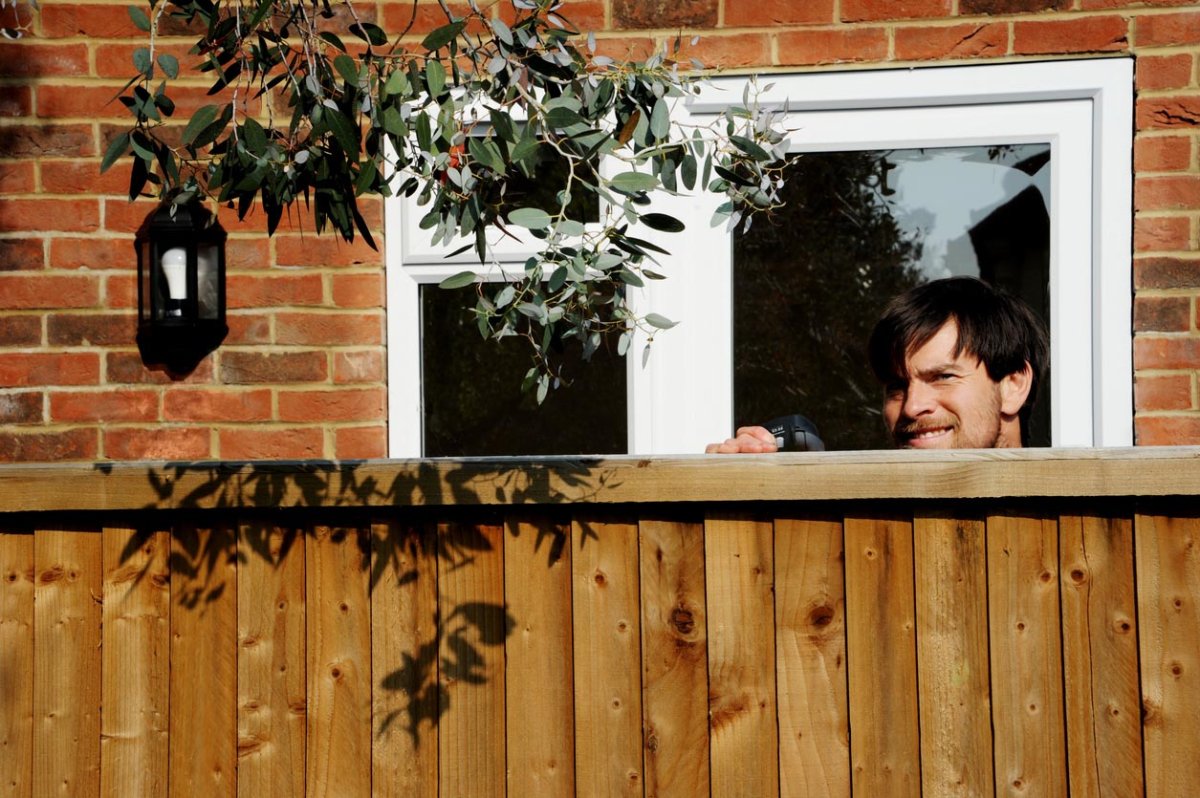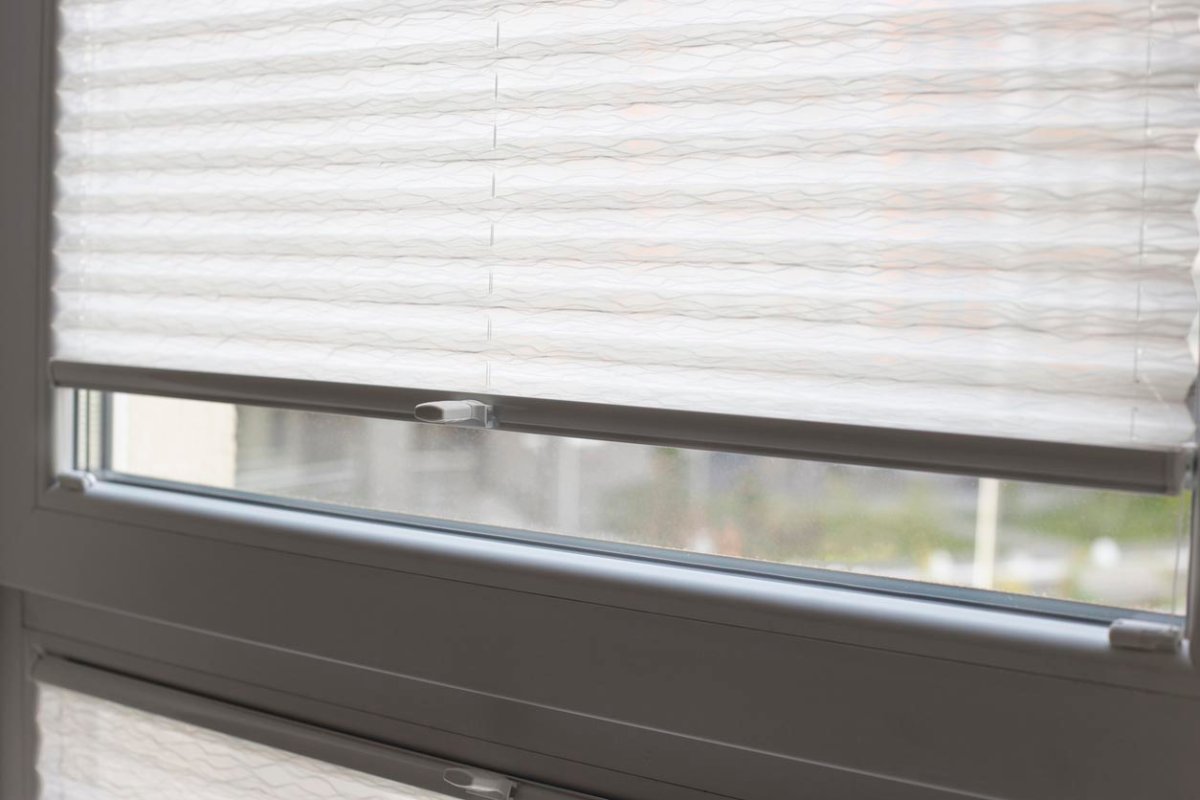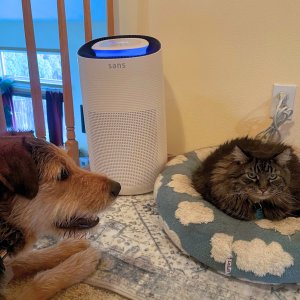

We may earn revenue from the products available on this page and participate in affiliate programs. Learn More ›
Q: A new family moved in next door, and while they’re relatively polite, they can be a bit nosy. I’ve caught them staring into our backyard on multiple occasions, and I’m worried they’ll start peeking through the windows next! We’re thinking of installing a large privacy fence, but do you have any other advice on how to deal with nosy neighbors?
A: Nosy neighbors are more common than you’d expect. Whether they’re looking in on your property or coming outside for unwanted, extended chats, nosy neighbors are present in most communities. The psychology of nosy neighbors is quite intriguing, as these people often derive power from knowing secret information about others and gossiping throughout the community. It can be frustrating to deal with, but there are plenty of simple actions you can take to improve the boundaries between your household and the one next door.
Installing a privacy fence is a great option, though you could also consider strategically placed landscaping. For the inside of your home, curtains and privacy film are your best bet. If you’re worried about your nosy neighbors treating your property like their own, a good security system might be warranted. There are plenty of other actions you can take to protect your privacy. Here’s a look at some of our favorite options if you have signs of a nosy neighbor.
Confront your neighbor in a firm but polite manner to ask them to respect your boundaries and privacy.
One of the easiest ways for a homeowner or renter to deal with nosy neighbors is by talking with them. Many people may not realize they’re annoying their neighbors or that they’re invading their privacy. Before talking to them, it’s important for residents to be relaxed and have specific instances that have caused discomfort (such as exact dates, times, and actions). Clarity and respect are key here. Approaching neighbors with these in mind could help them realize they’re being too “friendly” and allow them to change their behavior without feeling offended.
This approach won’t work with all neighbors, especially those who have been aggressive in the past or if there have already been negative encounters with others in the neighborhood. In fact, approaching nosy neighbors with the wrong mindset could make matters worse. But if a new family has moved in or it’s a behavior that has just started, confronting them in a firm but polite manner is the fastest way to fix the problem. There should be a respectful degree of privacy between neighbors.
Along with confronting the nosy neighbors, it may be worth talking with others in the community and looking into how to start a neighborhood watch. The program is popular in cities throughout the country as a way to deter crime and unwanted behavior.

Use landscaping strategically to block your neighbor’s view of your home.
When used properly, landscaping is a great way to block out nosy neighbors. A common example of this is lining a single-family property with trees, though this can be expensive and it can take time for the trees to fully develop and block out their view. Another option is to use plant pots near doors or windows, as these can help obscure the view into a home without too much expense. Beyond plants, decor such as birdhouses and yard art can limit a neighbor’s view of the property.
The same techniques also work for apartments or condominiums. Hanging plants by windows, placing them near windowsills, or lining a balcony with plants and flowers are all great ways to deter neighbors from peering inside. Renters will want to check with their landlord before doing anything permanent, although plant pots and decorations shouldn’t pose an issue.
Install a privacy fence to make it harder for your neighbor to see your property.
Landscaping is a great way to add privacy to a property, but nothing works as well as a bona fide privacy fence. Privacy fences are more robust than typical fences, designed to stand between 6 and 8 feet tall without any space between each post, and make it nearly impossible for neighbors to spy on the property.
Privacy fences are ideal for homes with pets or small children. Not only do they prevent unwanted viewing, but they ensure no one accidentally wanders out of the backyard. Privacy fence costs can be high, so homeowners may want to consider DIY alternatives or other cheap fence ideas. Homeowners who opt for professional fence installation will want to get quotes from several of the best fence companies to ensure they’re getting their money’s worth.
Homeowners who have homes located within a homeowners association (HOA) may require approval to build a fence, or even to use one of the best fence stains to freshen up an existing fence. It also may be worthwhile for homeowners to ask about the types of fence materials allowed by the HOA, as this may vary by community.
It’s important to remember that privacy fences can only do so much, and nosy people can keep peeping on the neighbor from the second floor of their home and staring into the backyard. This can be mitigated by combining landscaping (such as tall trees) with the fence, which offers additional privacy and security.

Add privacy film to your windows.
Privacy fencing and landscaping can go a long way toward deterring sneaky neighbors, but sometimes they aren’t as effective as expected. A foolproof way to bring privacy to a home is with privacy film, which attaches to windows and prevents anyone from seeing inside.
Privacy film comes in a variety of styles. Traditional privacy film is affordable and easy to apply to windows, allowing light to shine through but obscuring anything on the other side. There are many different patterns available, but they all work by giving windows a frosted look that makes it hard for even the nosiest of neighbors to tell what’s happening on the other side. Many of the best window film options are affordable, reliable, and stylish, making them a great way to enhance a home’s privacy.
Electronic privacy film (sometimes called smart privacy film) is another option. This type of film can be toggled between opaque and transparent styles, giving users the ability to have their windows unobscured or toggle on an opaque film if they see their neighbor looking inside.
Use blinds and curtains strategically to let in light while blocking prying eyes.
Installing blinds and curtains is a traditional method of blocking out peeping neighbors. Best of all, many homes likely already have them installed. By closing the blinds when privacy is needed, it’s easy for residents to ensure nosy neighbors aren’t looking in on their private property. The best blinds come in numerous styles and colors; shoppers will likely have no problems finding something that fits the aesthetics of their home.
The same goes for curtains. Those who are looking to truly block out nosy neighbors can opt for blackout shades, which prevent all light from entering. For something more relaxed, sheer curtains can be used to obscure the view while letting light filter in. Depending on the situation, a combination of both can provide optimal privacy. The best curtains give residents the flexibility to use them as they see fit and are durable enough to last for years before needing to be replaced.
If nosy neighbors are also noisy neighbors, blinds and curtains are a great way to muffle sounds, However, there are plenty of other ways to block out noisy neighbors beyond curtains, including updating insulation and filling cracks in the home.
Install security cameras around the perimeter of your home to deter intruders and sneaky neighbors.
Despite the best attempts to dissuade them, some neighbors will continue to snoop around. If fences, landscaping, and blinds aren’t enough to deter nosy neighbors, it may be time for the homeowner to invest in a security camera.
Installing a security camera can help on two fronts. First and foremost, it lets neighbors know the property is being watched, making them less likely to invade a property or peer inside. This also means they could be caught on film peeping, which should be enough to push away unwanted attention. This can be especially useful for neighbors who are constantly hanging out in a backyard that’s not their own, as many cameras can be programmed to activate sirens or floodlights, thus scaring away unwanted guests.
The second way security cameras can help is with general security. A good security system can make intruders think twice about burglarizing a home, and a well-placed camera will protect windows and doors from intruders. In the worst-case scenario, a camera will capture footage that can be shown to the authorities.
Shoppers will want to consider all types of security cameras, as there’s bound to be a product that fits the needs of all properties. As for where to place security cameras, residents will want to consider locations near windows and doors on the first floor. Alternatively, cameras can be placed in any location that a nosy neighbor frequently visits.
Add security signs around your home to act as a deterrent.
Along with security cameras, another way to deter nosy neighbors is with security signs used as “nosy neighbor signs.” These are typically included with the purchase of whole-home security systems, though some stand-alone products now offer security signs that can be placed in a window or yard. These aren’t foolproof, but many customers find that security signs deter crime from their property.
Security signs work well as a way to fend off intruders and neighbors, as they quickly let them know the home is being surveilled. Any unwanted (or criminal) actions will be caught on film, and that may be enough to stop most snooping. Security signs can also be placed in areas without cameras, ensuring passersby understand that a security system is installed regardless of how they approach a property.
Security signs work best when paired with one of the best home security systems (such as one from Vivint or ADT). That includes products beyond security cameras, such as motion sensors and entry sensors. When used collaboratively, they’re great at deterring unwanted guests. Customers looking to save money can opt for a DIY security system, which offers many of the same benefits as a professional system but can be much more affordable.

Use smart-home devices, such as smart locks and lights, to discourage unwelcome visitors.
Smart-home devices such as smart locks and smart lights are great alternatives to security cameras and entry sensors. Smart lights can be programmed to activate at certain times of day or when motion is detected, helping to deter unwelcome visitors or neighbors.
If outdoor lights are programmed to turn on when motion is detected, a neighbor might be less inclined to keep snooping, returning to their property instead of moving further into a backyard or onto a porch. Anyone curious about these products will want to learn more about how motion sensor lights work before installing them, as improperly tuned lights can become a nuisance to neighbors.
Indoor lights can also be programmed to activate on a schedule, which could confuse the neighbor and make it less likely they’ll try to peer through open windows. And while there’s conflicting evidence about whether it’s a good idea to leave a porch light on at night, smart porch lights can be optimized for all scenarios.
Smart locks are great, too, as they let users program in temporary codes. This means a code can be given to a neighbor if they are watching the house during a vacation, but deactivated once the trip ends. This is often easier than asking for a physical key to be returned, ensuring no one has access to a home unless they’re programmed into the smart lock.
If all else fails, consider filing a complaint with the local authorities and/or your homeowners association.
If a nosy neighbor simply doesn’t get the picture, it might be best to contact the authorities. Having neighbors who wander into backyards or look through windows isn’t just frustrating—it could also be illegal.
When reporting intrusive neighbors to the local authorities (or a homeowners association), it’s important for residents to have exact instances in mind. For example, what time of day is the intrusion occurring, and how long has it been going on? Better yet, homes with security cameras can share footage of the incident. Contacting an authority figure might be a great step to take after confronting the neighbor.
If they don’t respond to either a direct chat or authority intervention, then it might be best to install a large privacy fence and follow the other steps laid out above. Nosy neighbors can be troublesome, but with a bit of help from smart-home gadgets, landscaping, and security cameras, it’s possible to keep them at bay.
